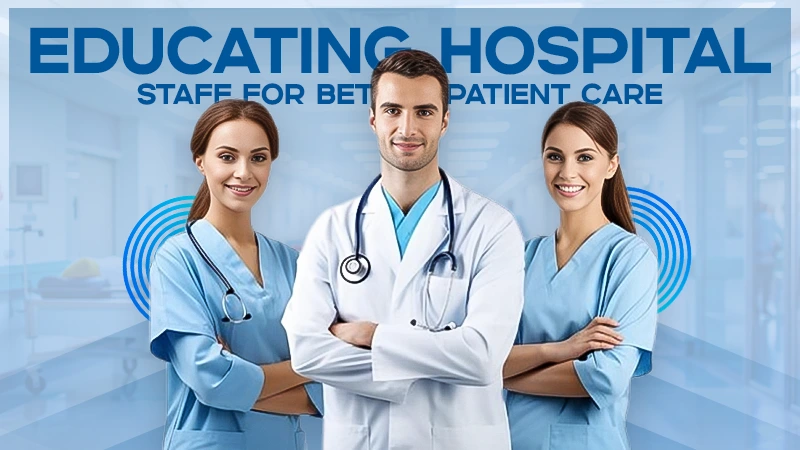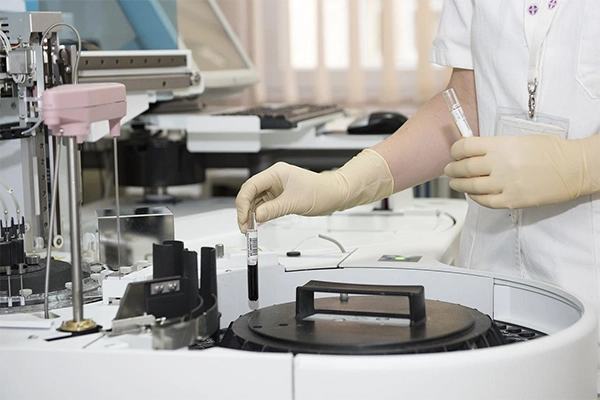
Any time a person becomes ill, they present themselves at the hospital as they are sure that the medical staff members will provide the best healthcare treatment and this aspect of building trust strongly creates the patient-nurse relationship.
Therefore, being responsive to this bond, many healthcare centers are in the process of looking for the right tools in order to equip and train their medical staff members as well as enlighten them with adequate information that would encapsulate all aspects of the hospital.
However, with multiple ways and advanced technologies the health facilities continue to evolve and it has become necessary for the staff members to be informed and knowledgeable on the trending techs to enhance the patient-care facilities.
So, let’s take an insight into how.

Emphasize Education & Development
Education is a fundamental factor in development and growth, and both of these are key components in the healthcare terrain.
The hospital focusing on these both is likely to cultivate a culture of excellence, innovation, and patient centricity.
Thus, when the healthcare center invests in the professional growth of its staff, it positively impacts the aspects of patient care facilities.
Therefore, encouraging them to acquire online bachelors in healthcare administration is a must, so they can gain the necessary knowledge and skills on how to lead and manage healthcare facilities effectively.

Develop Training Programs
The training programs for hospital staff members must be mandatory as these training programs improve their skills and they learn to provide good care to their patients.
Some key benefits include:
- Well-trained gain abilities and skills to address potential risks.
- The training helps develop strong communication.
- The staff members learn how to collaborate and work in a team.
- The training trained them to overcome challenges that are often common in their profession.
So, these are some of the reasons why it is vital to develop training programs for the staff members.
Implement Simulation-Based Learning
Simulation-based learning is a new technical method of learning that provides medical students with real-world-like opportunities to develop and practice their knowledge and skills but in a stimulated manner without harming a real patient.
Just as other methods in medical health centers, it seeks to solve the drawbacks of teaching with a real patient; the most effective innovative method for medical students which has the capability to bring a revolution in changes in education, training, augmentation of quality, and evaluation of the medical students’ performance.
As per the Research,
The Simulation-based learning tools – High-fidelity simulators and VR environments are the most adapted methods in the medical learning field.
Provide Guidelines & Protocols
Clinical guidelines and protocols are intended to provide staff members with information and parameters on how to manage a specific clinical procedure including dealing with a particular patient.
It includes;
- ensuring that every staff member behaves and treats every patient equally, and rightly.
- improves patient safety by helping guide decisions in critical situations,
- improves streamlined internal communication.
- patients’ admission and discharge, charting process, and patients’s rights.
Consequently, it’s important that each medical staff member once thoroughly goes through the guidelines and protocols to function effectively and efficiently and keep patients as well as themselves safe.
Encourage Team-Based Learning
Team-based learning and collaboration – an instructional strategy that’s significant in every field, and so in the medical field.
When all clinical staff collaborate effectively, healthcare teams can improve patient outcomes, prevent medical errors, improve efficiency, and increase patient satisfaction.
Monitor & Evaluate Performance
The staff members or learners should understand the concept of accurately monitoring and evaluating health programs.
It simply means collecting, analyzing, and transforming health data into strategic information for informed decision-making, improved effectiveness, and enhanced advocacy in health programs
The acquired monitoring and evaluation skills not only will help staff members address the gaps in care but also ensure the improvement of patient care facilities.
Focus on Patient-Centered Care
Practicing patient-centered care enables medical staff members to anticipate the anxiety and fear that patients sometimes experience when receiving care.
They learn to take this responsibility very well and provide comfort and reassurance to patients at every step.
They learn how to control the patient and make them fully understand the treatment and procedure they will undergo, while also bearing that they don’t panic and better collaborate with the clinicians.
Create a Supportive Learning Environment
The most paramount of all – medical staff members must learn how to create a supporting learning environment for the patients.
When patients are put in a comfortable and supportive environment, they are more likely to communicate and discuss more about their concerns and can better understand the treatment plans, hence this warm approach encourages them to make better decisions regarding treatment plans.
Wrap Up!!
Encouraging medical staff members to conduct training sessions, workshops, and so on which in one way or another will involve or simulate some practical session that will go a long way in improving the worker’s knowledge and skill and therefore proffer good health care to the patients.
By supporting hospitals continuing education of their staff members, one is in a position to foster a healthcare environment that has regard for its patients.